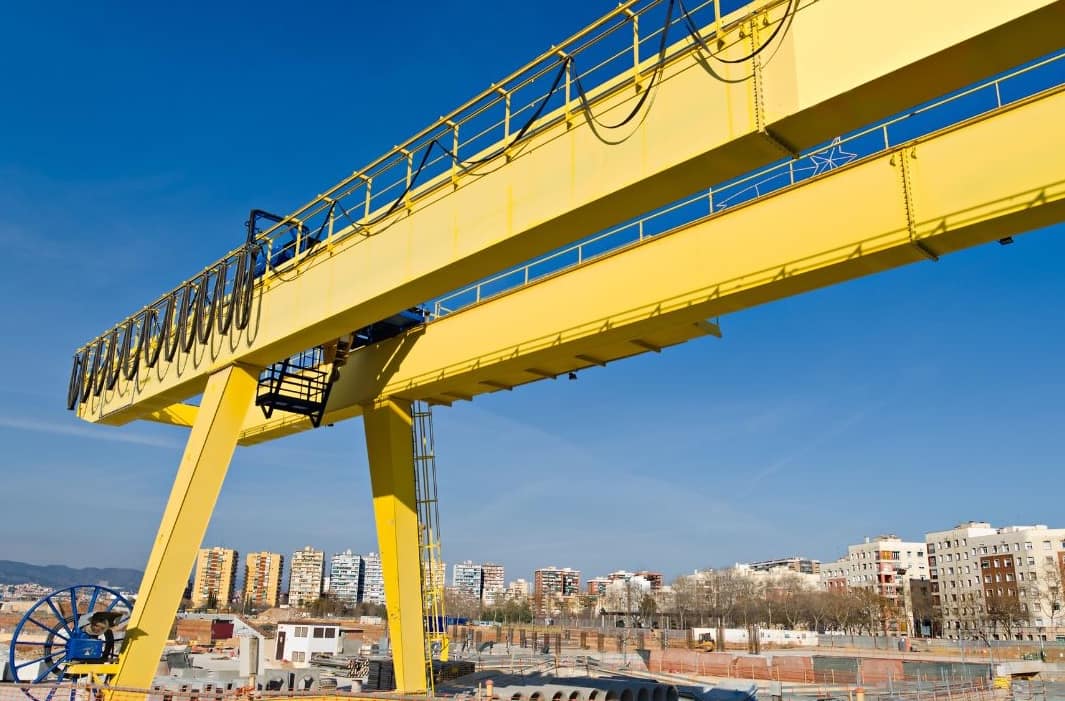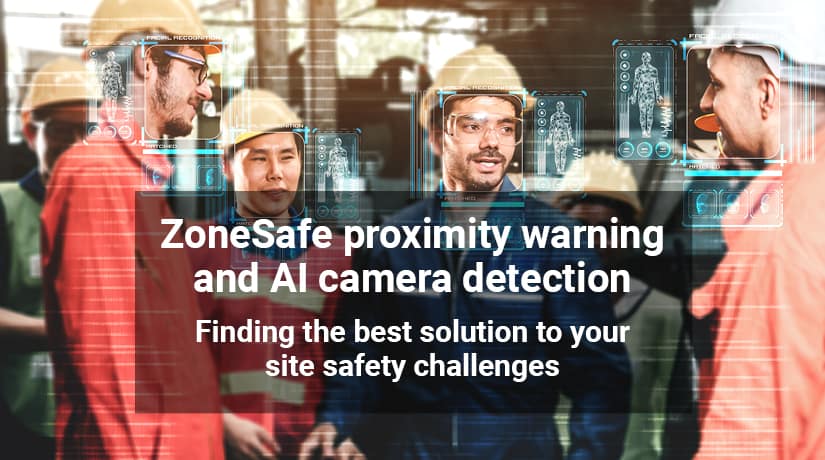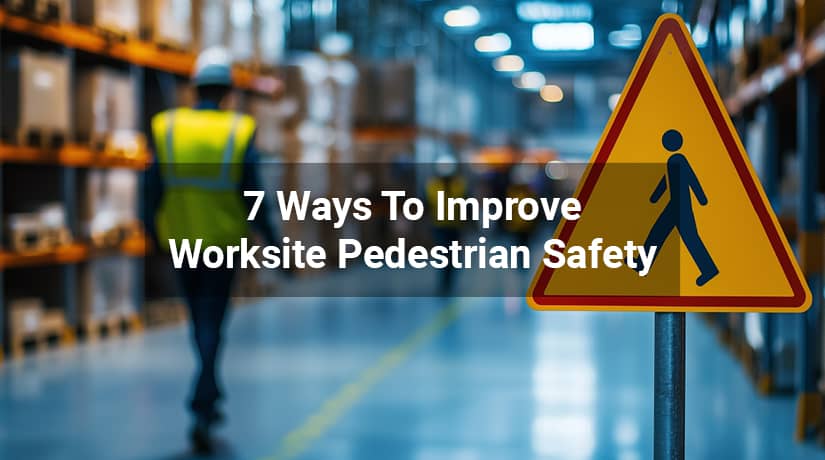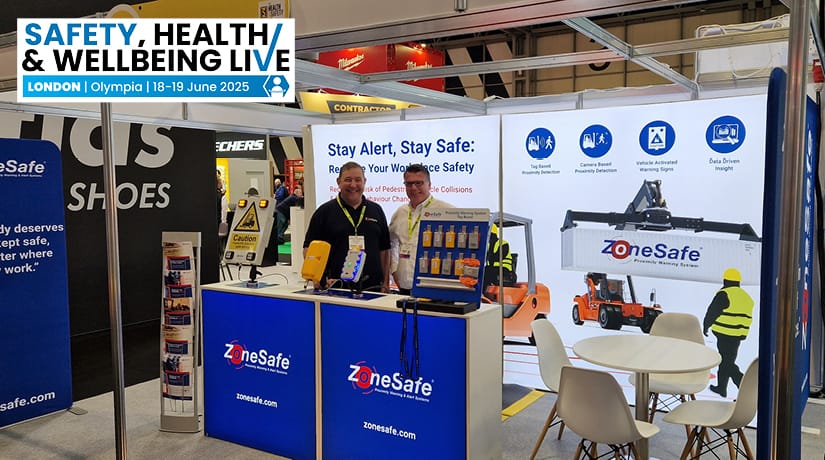Gantry cranes, forklifts, reach stackers, excavators, bulldozers, tractors, articulated trucks – the list of machinery that are used in the industrial sector is lengthy. Most can be dangerous if the correct safety procedures are not in place.
What do we mean by industrial?
When people think about industrial work, for example in warehouses, we almost immediately think of forklift trucks. Yet there are many different types of vehicles that are used within the industrial sector – and are used near pedestrians.
We need to be familiar with different types of vehicles. Then we can be more aware of the dangers that can occur.
Gantry cranes
The term ‘gantry crane’ can be used to describe several different lifting systems, so in case you’re unclear it’s good to start with the question – what exactly is a gantry crane?
A gantry crane is a crane built on top of a gantry, which is a structure used to straddle an object or workspace. They can range from enormous ‘full’ gantry cranes, capable of lifting some of the heaviest loads in the world, to small cranes, used for tasks such as lifting engines out of cars and other vehicles. These are also called portal cranes, the ‘portal’ being the empty space straddled by the gantry.
Other Gantry cranes
An overhead crane (also known as a bridge crane) are often used interchangeably, as both types reach over their workload. The main difference between the two is that on gantry cranes, the entire structure is usually wheeled along (often on rails). On an overhead crane, the supporting structure is fixed in location. This is usually in the form of the walls or ceiling of a building, which is attached to a movable hoist running overhead along a rail or beam (which may also move).
An overhead crane can refer to a system with a horizontal beam that travels along a supporting gantry steel work – to make it even more confusing.
Where is a gantry crane used?
Gantry cranes are generally used for lifting extremely heavy objects. Because of this, they are often employed during shipbuilding, where the crane straddles the ship to allow for very large jobs, such as lifting the engines into the ship.
Smaller gantry cranes are generally used for manufacturing jobs, and shifting large parts in and out of locations – or between work stations and assembly points. In warehouses (where there are heavier materials and loads to be moved) gantry cranes are often used as they can typically carry weights of up to four tons.
The danger of gantry cranes
There is a severe risk of injury, and even death, when working with cranes. The second largest cause of deaths involving cranes is pedestrians being struck by crane loads – and being caught by, or being trapped in between cranes were still a high cause of pedestrian deaths.
Many of these incidents can be prevented with some form of alarm, that is sounded when pedestrians are in close proximity to a gantry crane.
The ZoneSafe Vehicle to Person Alert (click here for more details) is a proximity warning detection system, specifically designed to help prevent accidental collisions between industrial vehicles and pedestrian workers. Using RFID technology and offering a flexible solution, the Vehicle to Person Alert system fits to all vehicle types, from materials handling equipment to plant.

Can ZoneSafe be fitted to any vehicle?
Yes. Whether it’s a forklift truck, excavator, reach stacker or gantry crane, the system is designed to fit any type of vehicle – large or small. Larger vehicles such as reach stackers can be fitted with multiple detection zones to cover key areas of the machine, including the rear turning area, blind zones and spreaders. Additional antennas can also be fitted to create larger detection zones when required.
Who is ZoneSafe for?
Any industry that uses industrial vehicles alongside pedestrians can benefit from the ZoneSafe systems. In aviation, Jet2.com use our systems to protect their assets on the tarmac. In logistics and infrastructure, Qube installed our systems to increase visibility of personnel to operators of heavy machinery within their port. Eurovia Roadstone, one of the world’s largest asphalt producers, use our Vehicle to Person system to protect personnel members when near a shovel loader.
Increasing safety awareness
Increasing awareness and improving site safety are key components of the ZoneSafe philosophy, and implementing their safety applications can drastically improve a workplace’s safety culture.
ZoneSafe Proximity Warning and Alert Systems do more than just give industrial vehicle drivers (such as forklift trucks, reach stackers or excavators) an alert to a pedestrian worker close by.
Over the years, the standard ZoneSafe system has been developed and re-engineered. This is to include new applications and systems. These are personnel and vehicle access control, walkway and crossing alerts, and asset protection.
One of the most interesting comments from clients who use ZoneSafe is not just how well the system works but that the safety culture and environment drastically changes within a work site. Rather than taking that shortcut across the yard, pedestrian workers don’t want to set the proximity alarm off on a vehicle so they automatically give the vehicle a wide berth. This makes for a much safer work site as the pedestrian worker starts to automatically work safer as second nature, perhaps even becoming ‘zone safe’.
For further information about ZoneSafe, click here.




